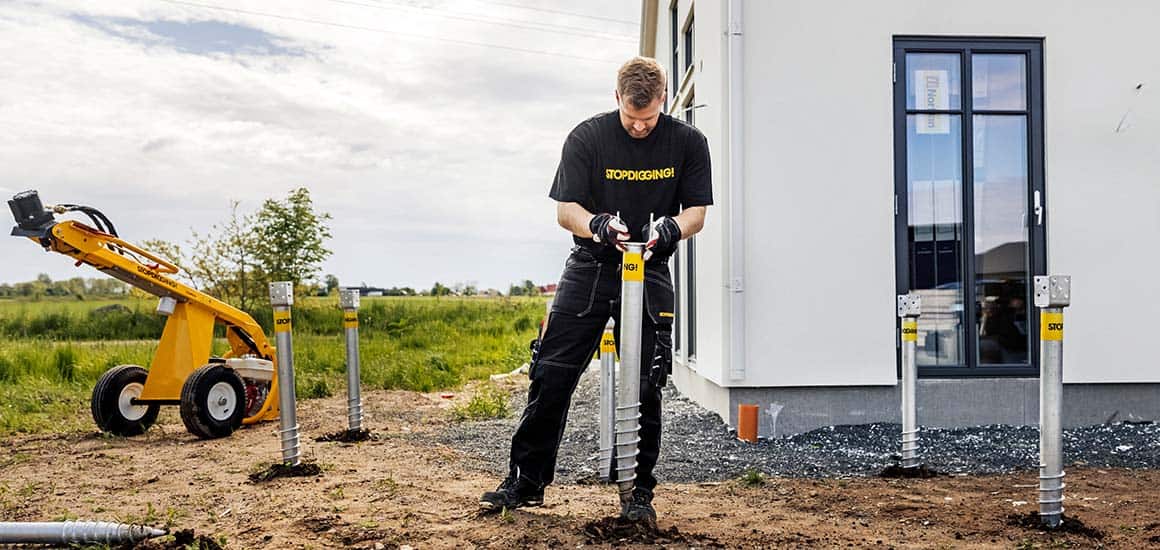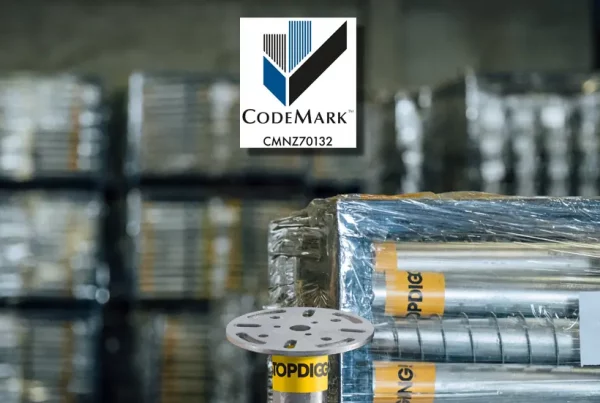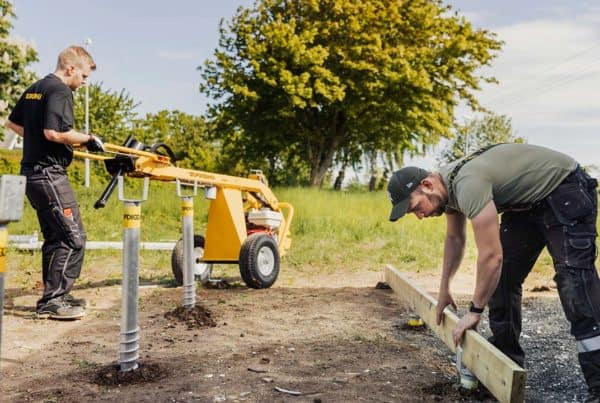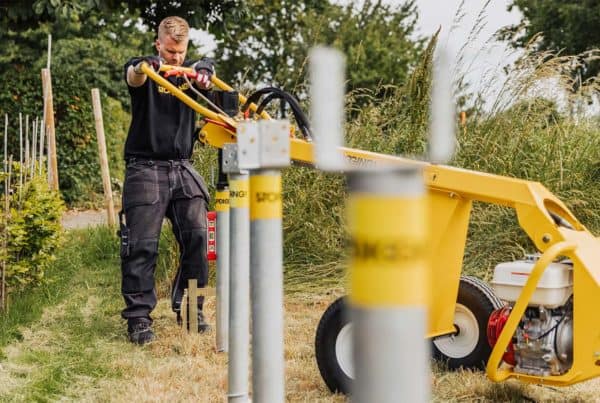INSTALLATION
If you have previously constructed a large or small building, you have probably used concrete foundations or concrete plinths. You probably spent many hours digging, casting and trying to get the plinths level or your concrete foundation even and smooth. The lawn probably looked like a small battlefield with deep holes, mounds of earth from the holes you dug up and rocks that were in the way of the plinths.
You can avoid all this if you choose a ground screw from Stop Digging. Instead, we will provide a flexible and quickly assembled foundation for your construction project, regardless of whether it is a terrace, a storage room or the guest house you have planned for a long time.
GROUND SCREW AND MOUNTING
A ground screw, also called a ground anchor, is screwed into the ground without you having to dig before installation. If you are somewhat experienced in construction and familiar with what the construction trade offers, you have probably seen earth anchors and ground screws on the shelves. You screw them into the ground to anchor smaller buildings. These are ground screws for do-it-yourself projects that do not have to withstand any major load or pressure. Of course, we also anchor our ground screws in the ground, but the difference is that they can replace a concrete plinth and are much stronger than what you find in the building materials trade.
You cannot install ground screws yourself when it comes to our earth anchors. An installer is required to handle the job. We have experienced and knowledgeable installers throughout the country, so you have close access to ground screws and assembly as soon as you want to get started with your construction.
HOW DOES IT HAPPEN?
The process itself is simple, you just have to plan your construction. If what you are going to build requires a building permit, contact the building authority in your area. There you can get help with applying for the permit. Not all buildings require a building permit, it depends on size and height. However, you must follow the guidelines that exist, such as how close to the plot boundary you may place a building.
As soon as you have your design ready, have calculated the number of screws, and have a building permit if needed, please contact us. We will then give you a quote for what your foundation will cost and if you agree we will book you in for installation. The installer will advise on the number of screws required. They will do this based on your project and the prevailing ground conditions. Before we can install a ground screw, we always pre-drill to see what ground conditions we have to work with. It is required for us to be able to choose the right length of the ground anchor so that the anchorage is stable and secure. Then we install the ground screws.
DIFFERENT GROUND SCREWS FOR DIFFERENT CONSTRUCTIONS
We do not use the same type of ground screw for all projects. It all depends on what you are going to build. For a terrace, we choose a beam screw where you then mount the timber beams and for poles, we have our flexible post screw. Whatever you require, it takes very little time to install the ground screw. Therefore, this method is both more cost-effective and less resource-intensive.
We can install ground screws when constructing, fences, timber framed or SIPS panel extensions, balconies and much more. This means that ground screws are just as suitable as a foundation for domestic projects as they are for commercial projects. We can – mount them in all kinds of soil – sandy soil, topsoil, clay and stone – without having to dig out and remove rocks and stones. Our ground screws usually push them aside when they are anchored.
If you are going to build something that requires an unusual fitting/attachment, we have a number of different accessories to be adapt our screws to your requirements, including L-supports, modular building brackets, fencing brackets and flagpole brackets.
MOUNTING IN ROCK
In some areas, such as coastal areas, you may have a variety of soil types and even rock where you want to build. In these instances, we install the ground screw where it is possible to anchor. Where it is rocky, the installer first drills a hole in the rock and then installs the screws.
INSTALLATION ALL SEASONS
We are not dependent on the weather conditions frost-free and the ground being soft. With our help, you can also build in winter as our ground screws can be installed in frost covered ground. For commercial builders this means you can have your building foundation anchored and ready all year round, resulting in less down time in the winter months which, in turn, should increase your business activity throughout the entire calendar year. If you use concrete, you cannot pour if there is frost in the ground, hence your construction projects are often delayed. If we install our ground screws for you instead, you can get started with your construction as soon as they are in the ground!
This also follows for private individuals who may want to use the winter months to build a conservatory or storage room. By installing Stop digging ground screws, we make this possible.
PLANNING AND PREPARATION
If you want us to install a ground screw for a larger project, we usually carry out a tensile test first, to ensure that we use a ground screw with the correct load bearing capacity. When it comes to newly excavated areas, the ground conditions can affect our installation. In these instances, we may need to install a longer screw to be able to guarantee a safe installation. We have everything from 580 mm long screws to 2,500 mm, and we now also have extendable screws which are capable of penetrating the ground many metres deep. So, at Stop digging, we have a suitable solution for every conceivable project.





